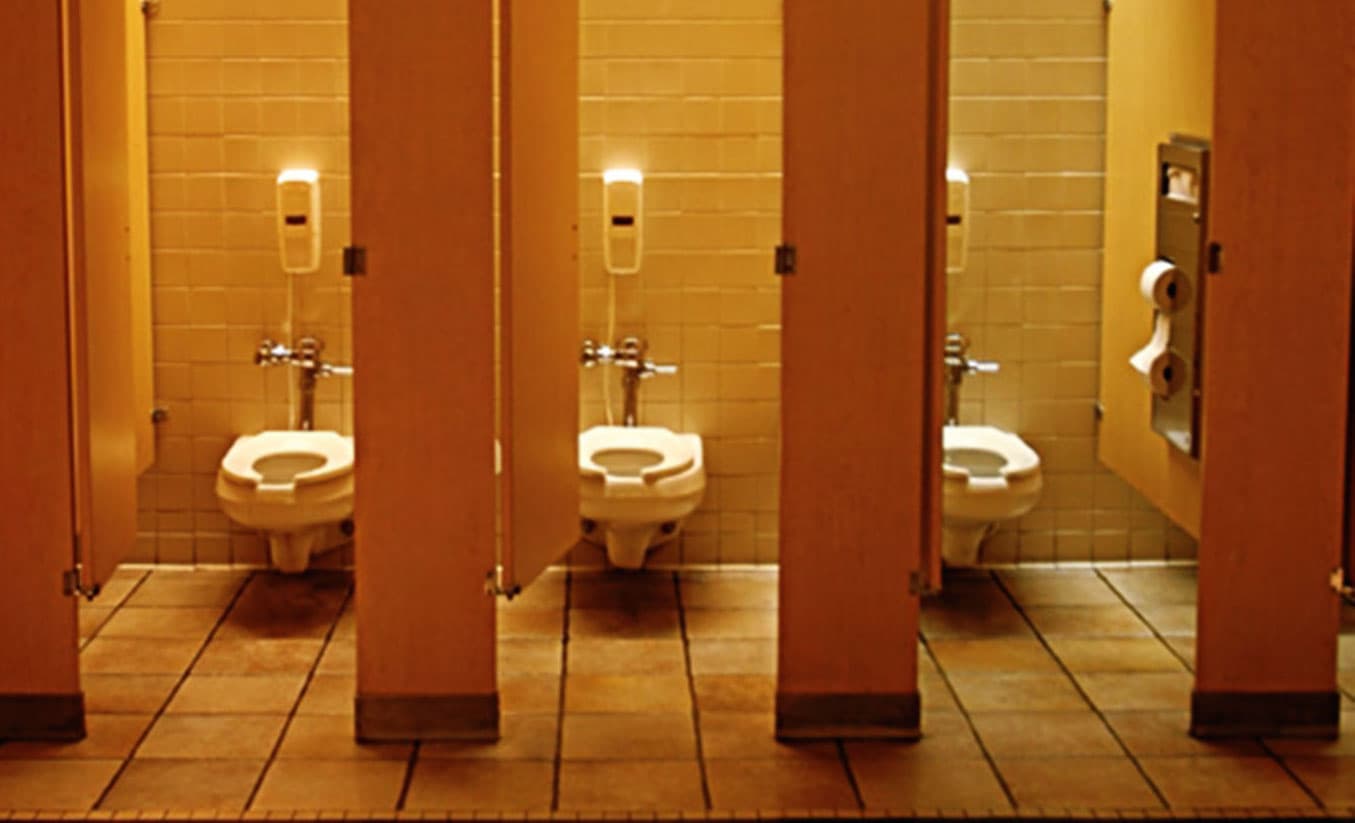The microbes growing in a public restroom (and why that's not as bad as it sounds)

Raise your hand if you breathe a sigh of relief when a public restroom has automatic faucets and towel dispensers so you don't have to touch anything to wash your hands. And have you ever tried to open the door with an elbow, or hoped someone else would open it just as you were leaving so you could give it a quick hip check and be on your way?
That's because public restrooms are supposed to be gross and dirty; hundreds of people traipsing in and out all day, smearing who knows what on the countertops and soap dispensers. Especially during cold and flu season, even the ones in fancy restaurants and office buildings feel like a ticket to your next sick day.
A recent study of the microbial environment inside four public restrooms on a university campus, published in the journal Applied and Environmental Microbiology by UChicago microbiologist Jack Gilbert, PhD, and his colleagues, would seem to confirm our worst fears. After swabbing floors, toilet seats and soap dispensers, they found Staphylococcus and MRSA, human papilloma virus and herpes. Despite the scary roll call of pathogens, however, Gilbert said the way these microorganisms developed over time was actually reassuring.
"When we looked at the Home Microbiome Project, we found very similar things," he said, referring to his previous work analyzing the microbes that live in our houses and apartments. "The similarities between a public restroom and your house are quite striking. That's actually made me less paranoid about restrooms. I go into a public restroom now and think, microbiologically, this is same as my living room, or the same as my bathroom at home. They're just somebody else's bacteria and not mine."
Gilbert, with the help of Scott Kelly, a biologist at San Diego State University, commandeered four public restrooms in the North Life Sciences building at SDSU. Two were women's restrooms and two were men's, one each from a high traffic and low traffic area to ensure a good sampling mix. The bathrooms were thoroughly cleaned with a strong bleach solution at the beginning of the study to give them a fresh start.
Periodically over next few weeks at varying intervals, they swabbed soap dispensers, toilet seats and floors around the toilet for microbes. Gilbert's team then cultured some of the microbes in petri dishes in the lab and analyzed genetic sequences of others to get a more comprehensive picture.
Immediately after cleaning, microbes associated with the gastrointestinal system proliferated, which made sense, said Gilbert, given the built-in dispersal system of flushing toilets. But after a few hours those pathogens, not suited for living on cold, dry surfaces outside the gut, were wiped out and replaced by hardier microbes from the skin and outdoors, like staph. The ratio of bacterial cells to phages, viruses that attack those bacteria, was also very low, suggesting that most of the dangerous-sounding pathogens were most likely dead as soon as they hit the surface.
"The majority of restrooms reached a very similar state, very quickly, which suggests that the vast majority of us release the same kinds of microbes which can survive and can proliferate in this environment," Gilbert said. "So it's almost as if the restroom is selecting for a very specific subset of bacteria and viruses that can survive in that ecosystem for whatever period of time."
The likelihood of some seriously nasty pathogen surviving in what Gilbert called this "horrendous alien desert" for microorganisms is extremely low, mostly because even the dangerous-sounding ones are with us all the time.
"Human beings are just laden with bacteria, some of which have the propensity to cause disease. But for the most part they're all commensal organisms. They're hanging around with us and we're perfectly healthy and they aren't causing us any danger or harm," he said.
So maybe we can be a little less freaked out about using a public restroom. But Gilbert says it's still a good idea to at least wash our hands when we leave.
"In the vast majority of times, washing your hands probably has no impact on you or anyone else. But it makes people feel better," he said. "There's an extraordinarily low probability that you may pass along something dangerous, but when you're dealing with a population of 10 million in a metropolitan area like Chicago, that's always a possibility because of the sheer numbers game."
The study, "Ecological succession and viability of human-associated microbiota on restroom surfaces," also included co-authors Sean Gibbons from the University of Chicago; Tara Schwartz, Jennifer Fouquier, Michelle Mitchell from San Diego State University; and Naseer Sangwan from Argonne National Laboratory.

